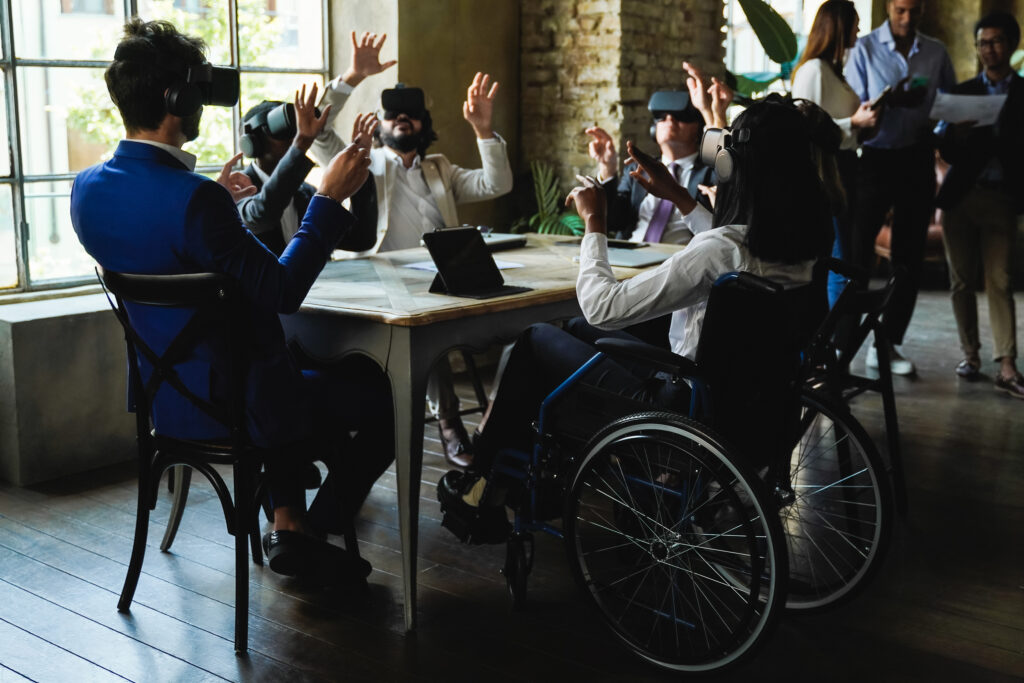
Employee Resource Groups (ERGs) can be an essential tool for promoting diversity and inclusion in the workplace. These groups can provide a safe space for employees from various backgrounds to come together, share experiences, and discuss strategies to overcome barriers that hinder their professional growth. ERGs are not only essential for supporting employees but also for promoting equity in the workplace.
What are Employee Resource Groups (ERGs)?
Employee resource groups (ERGs) are voluntary, employee-led groups that bring together individuals who share common interests, backgrounds, or experiences. These groups are typically formed around shared characteristics such as gender, race, ethnicity, sexual orientation, or disability. ERGs provide a supportive and inclusive environment for employees to connect with one another, share experiences, and collaborate on projects that benefit the organization and the community.
What are systemic barriers?
Systemic barriers are obstacles that are built into the structure of an organization or society. They are often invisible, and they can prevent individuals from achieving their full potential. Systemic barriers such as racism, sexism, ageism, classism and ableism have been prevalent in workplaces since their inception. These barriers create unequal opportunities for employees, limit career progression, and promote an unfair work environment. ERGs can be instrumental in addressing these issues by providing employees with a platform to voice their concerns and propose solutions to management.
How can ERGs can help identify and address areas of inequality within a organization?
Here are several ways ERGs can can help identify and address areas of inequality within a organization:
- Providing Support for Marginalized Groups
ERGs are particularly beneficial for employees who belong to marginalized groups, such as people of color, women, LGBTQ+ individuals, and people with disabilities. These groups often face unique challenges in the workplace that can be difficult to navigate alone. ERGs provide a supportive community where members can share their experiences, seek advice, and offer support to one another.
For example, an ERG for Black employees can provide a space to discuss issues such as microaggressions, racial discrimination, and barriers to career advancement. This group can provide support, mentorship, and networking opportunities to help Black employees navigate the workplace and advance their careers.
- Fostering Diversity and Inclusion
ERGs can also help to foster diversity and inclusion in the workplace. By bringing together employees from various backgrounds, ERGs can provide a space for individuals to learn from one another and gain a better understanding of different perspectives. This can lead to increased empathy, collaboration, and creativity in the workplace.
Moreover, ERGs can also promote a sense of belonging for members and increase their engagement with the organization. Employees who feel valued and included are more likely to be productive and motivated in their work, leading to better business outcomes.
- Driving Change in the Organization
ERGs can be instrumental in driving change within an organization. By highlighting areas of inequality and advocating for change, ERGs can influence company policies, practices, and culture. For example, an ERG for employees with disabilities can work with leadership to improve accessibility in the workplace, making it easier for employees with disabilities to perform their jobs.
Similarly, an ERG for LGBTQ+ employees can advocate for inclusive policies such as gender-neutral bathrooms, health benefits for same-sex partners, and diversity training for all employees. These efforts can lead to a more inclusive and equitable workplace for all employees.
Challenges of ERGs
While ERGs are essential for promoting diversity and inclusion in the workplace, they can also face several challenges. Some of these challenges include:
- Lack of Executive Support
ERGs require executive support to be effective. If leadership does not prioritize diversity and inclusion initiatives, ERGs may struggle to gain traction and influence change within the organization.
- Lack of Resources
ERGs often operate on a voluntary basis, which can limit their resources and ability to impact change. Without sufficient funding, ERGs may not have the necessary resources to organize events, provide mentorship opportunities, or advocate for policy changes.
- Tokenism
ERGs can also become tokenistic if leadership uses them as a way to show they are addressing diversity and inclusion without actually taking substantive action. Tokenism can result in ERGs feeling unsupported and undervalued.
ERGs are essential for promoting diversity and inclusion in the workplace. They provide a safe space for employees from various backgrounds to come together, share experiences, and discuss strategies to overcome barriers that hinder their professional growth. ERGs can identify areas of inequality within an organization, foster diversity and inclusion, and drive change within the company. However, ERGs also face challenges such as lack of executive support, lack of resources, lack of diversity, and tokenism. Addressing these challenges with a comprehensive strategic ERG program is the first start.
Ready to fully support and empower your ERGs to create the change that you want to see in your organization,? Click here to learn more and schedule a Discovery Call.

